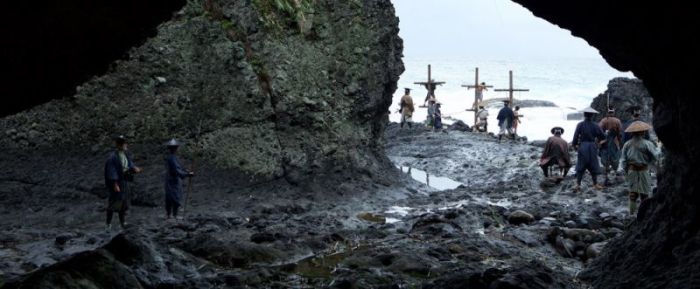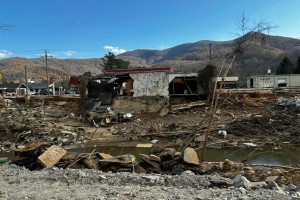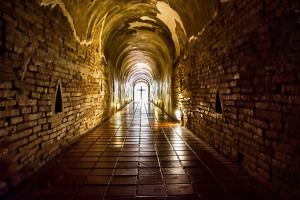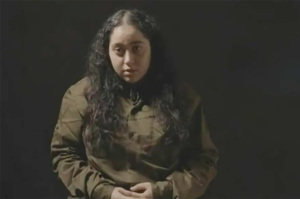Christian Persecution, Religious Freedom Explored in 'Silence' (Movie Review)
Film Review: Silence, directed by Martin Scorsese
"Religious Freedom Day" is observed each year on January 16.
This year, perhaps surprisingly, Hollywood has given us a reminder of why the principle of religious freedom is so important — to avoid the persecution of religious dissenters that has stained so much of world history.

Based on the 1966 novel by Shusaku Endo, director Martin Scorsese's new film Silence takes place in 17th-century Japan. Although fictional, the story is based on some real characters and rooted in an actual historical epoch — the time of the "Kakure Kirishitan," or "hidden Christians."

Catholic missionaries were the first to bring Christianity to Japan, arriving in 1549. They and their successors had significant success in the following decades in converting many Japanese. Later in that century and early in the next, however, Japan's rulers became more hostile to Christianity, eventually cracking down with harsh persecution that drove the remaining Christians to practice their faith only in secret.
The film seems to reverse a number of modern stereotypes. Contemporary Western secularists are fond of depicting Christians as persecutors, and missionaries as colonizing zealots intent on wiping out indigenous cultures. In Silence, however, the humble minority of Christians are clearly the victims of the brutal indigenous rulers. One historical archetype of religious persecution is the Catholic Church's "Spanish Inquisition;" in Silence, the sadistic Japanese governor is referred to as "the Inquisitor." He offers a familiar argument for cultural relativism when he suggests that Christianity is like a tree that cannot grow in the soil of Japan. A Catholic priest replies — correctly — that the soil has been poisoned by persecution.
One character cites the famous adage of Tertullian, "The blood of the martyrs is the seed of the church," suggesting that the patient suffering of Christians under persecution will merely draw more people to the faith. This may have been true in ancient Rome; but in much of the Middle East, the rise of Islam snuffed out existing Christian communities. Today, ISIS and other Islamist groups are devastating the few Christians who remain in that region with violent persecution not unlike that seen in Silence.
The story itself begins with two young Portuguese priests learning of rumors that a Jesuit priest named Ferreira, who had gone to Japan to continue the missionary work there, had apostatized — renounced his Christian faith.
The priests refuse to believe the reports — but are determined to go to Japan themselves to find the truth. The film tells the story of how they succeed in reaching Japan and are led to the underground Christian community. They are welcomed with joy — it has been years since the "hidden Christians" have had a priest who could administer the sacraments.
However, the two priests also hear about the persecution of Christians; eventually witness it from afar; then witness it from close up; and in the end, experience it themselves. The actual shedding of blood in Silence (rated R) does not rise to the level of Mel Gibson's The Passion of the Christ, but the film depicts a number of creatively horrible tortures inflicted upon the Christians — not to mention insidious psychological manipulation.
In ancient Rome, Christians needed only burn a pinch of incense in worship of the emperor to avoid his wrath. In Silence, the authorities place a small image of Jesus on the ground — and merely ask the Christians to put a foot upon it.
Part of the drama of the film comes as the two Portuguese priests wrestle with how to respond to these challenges. Is stepping on the image a meaningless gesture — a small price to pay to avoid torture and allow one's private devotion to continue unhindered? Or is it an inexcusable betrayal of Christ?
Eventually the two priests are separated, and meet very different fates. To say much more would be a spoiler.
Scorsese, an Oscar winner and eight-time Best Director nominee has given us a film that, despite its painful subject matter, has many beautiful scenes. It also features fine performances as the two young priests by Andrew Garfield (The Amazing Spider-Man) and Adam Driver (Star Wars: The Force Awakens). Liam Neeson appears as Ferreira.
Why is it called Silence? The most obvious answer is found in the voice of the narrator (in the form of a letter by one of the priests). He speaks of the believers crying out to God in their pain — and hearing, it seems, only silence from God in return. In this sense, the film addresses the classic theological question of how a good God can allow evil and suffering.
Silence is a "Christian movie" — but it is not an "inspirational" one, ending in triumph for the Christians. If you can stomach the violence, however, it is a profound, thought-provoking, troubling, painful, deeply moving exploration of suffering and of religious freedom, raising some age-old questions — with no easy answers.





























